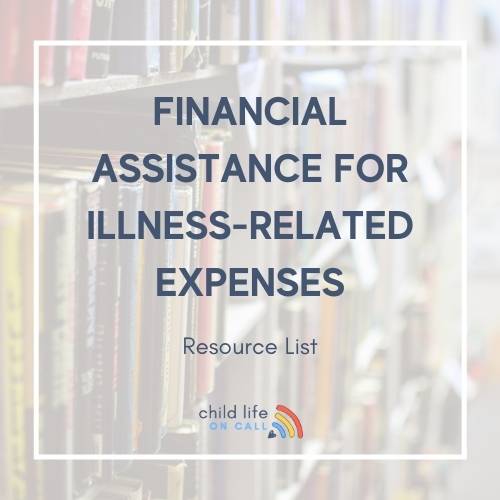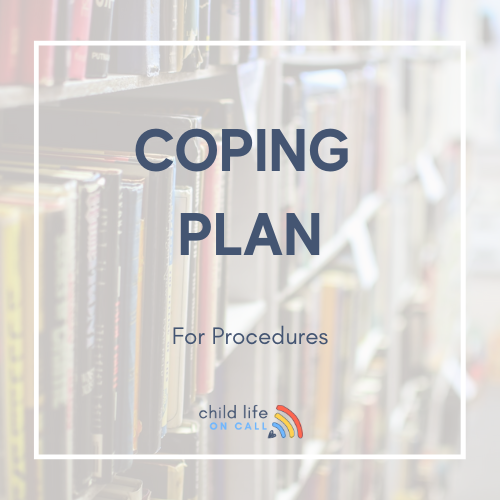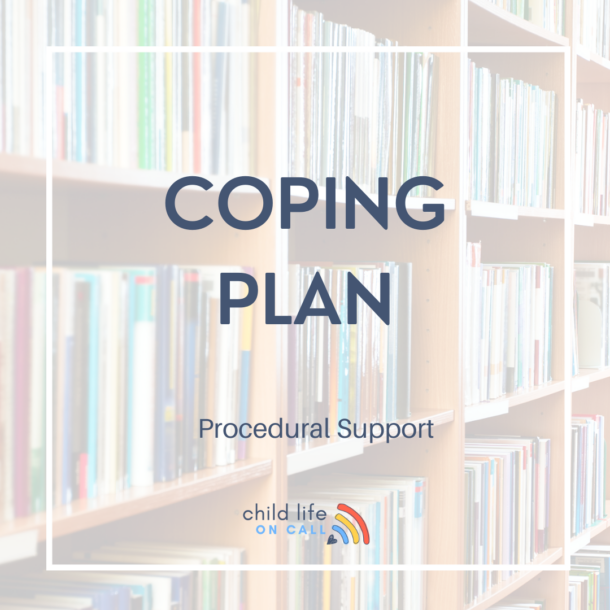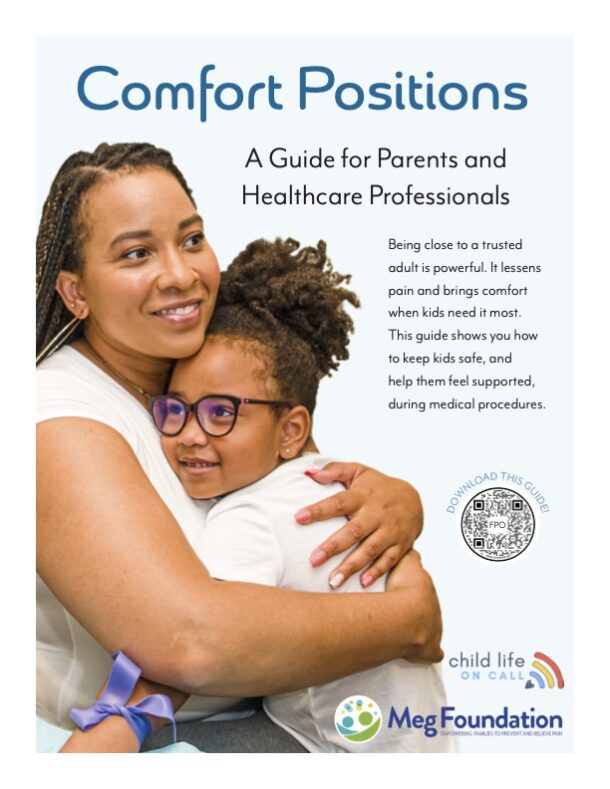"I've learned so much in this whole process. It's like you have a depth inside of you that resurrects as an advocate and high alert, and it lives inside of you when you need it." -Aspen, Willa's Mom In this episode of Child Life On Call, host Katie Taylor and guest...
Episode 108 | Melissa’s Story: A Son with Transposition of the Great Arteries
Podcast Show Notes
Here we are in the last week of February, which is heart month, and I am so honored to bring you Melissa’s story. We have discussed other heart defects before, such as tetralogy of fallot and hypoplastic left heart syndrome. This is the first time we are talking about transposition of the great arteries, or TGA. TGA is diagnosed in utero and requires surgery within days. I know Melissa’s story will bring so much value, comfort, and validation to other parents.
In this episode, we talk about…
[1:54] Melissa’s background and family
Melissa is originally from Florida, but she currently lives in Dallas, Texas. She moved there around five years ago to be with her now husband, and they have done a lot in those five years. They got married, bought a house, and had two wonderful kids.
They found out they were expecting their second child on their daughter’s first birthday. Melissa and her husband were so excited, and they hoped for a boy to join their family. When they found out it was a boy, their dream of having one daughter and one son was coming true. Everything was working out just as they had imagined.
[3:29] Getting the diagnosis of of transposition of the great arteries (TGA)
Then, they got to the 18 week anatomy scan. Melissa was already getting monthly sonograms due to advanced maternal age, so she did not expect anything much to come from the anatomy scan. She hadn’t had any issues with her daughter, so she expected another uneventful pregnancy. The doctor was so kind and positive, and he was talking to Melissa about how great everything looked. When he got the heart, he was quiet and spent several minutes looking around.
Melissa knew he was looking at something, but from what she could see on the screen the heart looked like it was pumping and she didn’t see any obvious issues. She was taking deep breaths and praying, because she wasn’t sure what was going on. When she finally asked if everything looked okay with the heart, the doctor told her he was trying to get a better look. As several more minutes passed, Melissa knew something wasn’t going well.
Eventually, the doctor told Melissa that the baby’s heart had a defect. He tried to describe it, but in that moment everything was going over Melissa’s head. She tried to absorb it and understand, but she didn’t completely understand. Then the doctor told her it was fixable, and she held onto that. Something is wrong with his heart, but it’s fixable.
The doctor told Melissa he would try to get her into the c cardiologist today, and he left the room. Melissa’s husband could not be there with her because of the COVID regulations, so she texted him at work and asked if he could talk. When he called, Melissa couldn’t even talk. She just started crying; she had to let it out. She explained that the doctor had told her there was a heart defect that was fixable, and they had to go to the cardiologist to get more information. Luckily, they were able to get in to see the cardiologist just a few hours later, and Melissa’s husband was able to come to that appointment.
The cardiologist was amazing and made them feel comfortable and somehow positive about the situation. He determined that their son had transposition of the great arteries (TGA), which means that his two main arteries leading to the heart were switched. The aorta and the pulmonary artery were reversed, so they were running in parallel rather than crossing over each other. In a typical heart, they cross over one another so that the oxygen and the blood can mix, providing the body with enough oxygen to breathe. When a baby is in utero, this is fine. They are in an environment where oxygen is everywhere, so the transposition did not matter yet. The issue begins when the baby is born, and has to breathe on his own.
While there could be other defects associated with TGA, such as a hole in the heart, they weren’t seeing any of that with Melissa’s son. They went back every month for a scan to confirm TGA was still the only defect and that nothing was getting worse or becoming more urgent. Melissa and her husband were informed that their son would need open heart surgery 3-7 days after he was born in order to perform the arterial switch. Melissa had a C-section with her daughter so she was already planning on one with her son, and they had a whole team planned to take the baby right away because he would need medical intervention to breathe and to stabilize before going into surgery.
[9:26] Melissa’s son’s birth and treatment after birth
When her son was born, Melissa was not able to hold him. They took him away, but Melissa did request a picture with them holding her son next to her. She couldn’t touch him, and it felt so strange to her. She was grieving the experience, as her daughter’s C-section was unplanned. This time around, she had hoped to get a good night’s sleep, have the C-section, and then get to snuggle with the baby. The plan had to completely change, and whenever you have to change something that your mind is set on, it’s a shock to the system. Melissa had to grieve because she knew she was going to lose that experience, and she also knew this would be their last baby. She would never get that experience again, of having her baby in the hospital room with her. She knew she wouldn’t get to breastfeed him right away either, as he was transferred to the children’s hospital next door within four hours of his birth.
After her C-section, Melissa was brought back to her recovery room. Before they transferred her son, he was wheeled in with tubes and things hooked up to him. He was inside a plastic container where she still couldn’t touch him, but they got another picture next to him before he left. The hospital policy was that you could leave and visit the children’s hospital once you were stable, and then come back to being admitted yourself. Melissa couldn’t imagine not seeing her son for three or four days while she recovered, so she was up and moving quickly after surgery. The same day, she was out of bed and walking. That first day, though, the nurses did not think she was stable enough to leave. Her husband went while she rested, and Melissa was able to see her baby the next day.
When she was able to see her son, Melissa felt as though she was not bonded with him right away. It almost felt like she was visiting someone else’s baby. She stayed for an hour or two, but then she had to go back and rest and get her own medications. It delayed the bonding process, which was something Melissa didn’t really expect.
[15:11] Melissa’s son’s surgery
Melissa’s son’s surgery was scheduled for day five, and at the time she remembers thinking that seemed so far away. She wanted to get the surgery done and over with as soon as possible, so he could recover and go home as soon as possible. They assured her that doing it on day five gave him more time to get stable and maybe to start breastfeeding. Her son was able to latch and eat well, and Melissa got to bond with him a bit more before surgery. When it was surgery day, Melissa thought that waiting another day or two would have been fine. There were certainly positives to waiting, even though she had originally wanted it done on day three.
The day before surgery, someone came by to walk Melissa and her husband through the risks of the surgery, both the common and less common. The hardest one came at the end, when they were reminded that death was a risk. Melissa says that she knew in the back of her mind that death was a risk for any surgery, but she didn’t want to hear it talked about in relation to her baby. That is when it really hit her that she wished the surgery wasn’t happening yet. She wanted more time with her son, and she realized that everything was so unknown. We never know how a body is going to react to something like this. She tried to stay positive, and the surgeon also came by to reassure them that the risk of death was small.
The next morning, Melissa and her husband were at their son’s room by 6:00 AM to snuggle him before the surgery. Her parents were watching their daughter at home, so they were able to get there early and be with him as he was taken to surgery. When they took him back, Melissa and her husband held each other and cried. It was the hardest thing to watch him go back and not know how it was going to go.
They were told they would get updates every 90 minutes, and they did. They either called or texted to keep Melissa and her husband updated. The surgery was supposed to take at least 6 hours, and it ended up taking about 8 hours total from when they took him back to when they were done. The doctors let them know when he went on bypass and when he was off, as well as when the switch was done. Melissa and her husband were sitting in a small conference room waiting, and at times they had to get outside and take walks for some fresh air while they waited.
Melissa recalls that she did start to feel better as the day went on, because they were getting regular updates and everything was going well. When the surgery was done, they could stand in the hallway and watch as their son was brought into his room. He was plugged into everything and had tubes taped all over him, and it was hard to see him like that. The surgery was successful, and he was stable. Melissa and her husband stayed with him for about an hour, and then they went home to get some rest after an emotionally exhausting day. They were also encouraged to let the medical team take over at night, because people would have to monitor and check in on him at all hours. If they were there, not only would they not be able to sleep but they also would likely be in the way.
When they came back the next morning, they were told that their son was doing really well. The surgery was a best-case scenario, and every day their son would improve. They were able to take tubes off every day, and he was looking more normal. After a few days, he was able to move to the cardio floor and off the ICU. He made that move more quickly than normal, so that was very encouraging. Once he was off intubation, Melissa was able to breastfeed again. He was eating well, and continuing to improve.
[25:24] Stenosis after surgery
When Melissa’s son was on the cardio floor, his numbers were a bit off. They were tracking his oxygen, and his respiratory rate was high. He was taking a lot of breaths per minute, and his oxygen rate was below normal range the majority of the time. The doctors said that was normal because he just had surgery, and it would take time for his stats to normalize.
They also redid echocardiograms, or sonograms of the heart, every couple of days. After a few days, they noticed that Melissa’s son had some narrowing of the arteries called stenosis. As part of the surgery, they had to switch his pulmonary and aortic arteries and stretch them to get where they needed to go, so a little stretching can occur which narrows the arteries. It is a normal side effect, and they noted that they might have to put a balloon stent in when he was a few years older to keep those arteries open enough for the blood to flow through.
When they repeated the imaging a couple days later, however, the doctor came to Melissa and said he was seeing something that he hadn’t seen before. Her son’s arteries were narrowing so much, the surgeon wanted to go back in and fix it. Melissa panicked, because this meant they would have to open him up again for another heart surgery within a week. There were no other options, as his arteries were narrowing so much that they had to patch both arteries with tissue from around his heart so his body wouldn’t reject it.
[29:15] A second surgery to patch arteries
The doctors assured Melissa that they didn’t miss anything, and the initial surgery went great. Her son just had an uncommon reaction, and about a week after the first surgery they had to repeat the surgical process. They snuggled him early in the morning, and they again had to watch him get taken back for surgery.
With the first surgery, everything went better than they could have imagined. They were ready to send him home, and then they noticed his numbers were off. At that point, Melissa and her husband asked if they could keep him for another day just to be sure. That was when they did another scan and found that the extent of his stenosis warranted a second surgery. So if they had taken him home, they don’t know how long it would have taken or what would have had to happen for them to find the issue. Melissa wants to encourage parents to advocate for themselves and for their child. If you feel like something isn’t right or you want a different course of action, say something. Pay attention to what you are feeling, because you know your child best. She also acknowledges that she was a bit hesitant, because she didn’t really feel like she knew him best as she had to spend so much time away from him. Ultimately, though, she knew that she didn’t feel comfortable and that something didn’t seem right.
[32:24] Inflammation of the thymus
During the second surgery, they patched Melissa’s son’s arteries and found another uncommon issue. We are all born with a layer of tissue in our chests called the thymus. It protects us from infection, and it fades over time. Her son’s thymus was inflamed, and it wrapped around his arteries and seemed to be pinching them. It was almost as if it was attacking his arteries, and they were swollen and stuck. The surgeon said he was going to fix both issues, so there would not be a reason to have to go back in for another surgery. The surgery was supposed to take four hours, but it ended up taking six hours because of the extra work involved.
[34:45] Recovery after two surgeries in two weeks
The surgeon was able to fix everything, and Melissa’s son came out with fewer tubes than the first time. He did still have to be intubated, however, so it felt like the recovery steps had to start all over again.
He also had a more difficult recovery this time around, as it was so much for his little body to go through with two surgeries in two weeks. He struggled more to learn to swallow again, but he was stable and doing well overall. He had more fluid around his lungs, so he had to go back on medicine for that. He had more inflammation around his diaphragm and his lungs, and they also discovered he had a milk protein allergy. Melissa had to stop eating dairy in order to breastfeed him, and there were a lot of things going on at one time.
Melisssa shares that those two weeks following that surgery were an emotional roller coaster. She was the most stressed she has ever been, and she felt like she was at her breaking point. She was on edge and angry that her son had to have a second surgery, and some days she wasn’t sure how she would make it through.
[37:15] What helped Melissa through this experience in the hospital
Melissa did have a social worker that worked with her, and she was amazing. She met the social worker before her son was born, but she didn’t think she was going to need much from her. When they were in the hospital, though, the social worker came by every day and she became one of Melissa’s closest allies. She was someone Melissa could vent to, and she helped Melissa get the things she needed. She could call the doctor for clarification on test results, or get more information about a medication or a treatment. Most importantly, though, the social worker was there to listen to Melissa. The social worker was just assigned to heart patients, so she knew the situation and she knew a lot about what was going on because she deals with families going through similar things all the time. Melissa is so grateful for her, and she still keeps in touch with her today. She emails her pictures of her son and lets her know how he is doing.
It was so important for Melissa to have someone who was there to take care of her and her needs. She felt like she and her husband were there to take care of their son, but who takes care of the mother who just had a baby? The social worker was always there asking what she could do to make Melissa’s time at the hospital better.
When Melissa went into the hospital, the only way she felt like she could help was to hold her son. When she went home to be with her daughter, she asked for volunteers. The hospital had volunteers to hold babies, and Melissa wanted someone to hold him and give him attention. The social worker also helped set that up and make sure volunteers were able to come by when Melissa couldn’t be there. Her son also loved when the music therapist came by. He would watch her play instruments and smile, and sometimes he would fall asleep while she played because it was so relaxing.
[42:00] Going home after five weeks in the hospital
Melissa started to feel bad for her son, because toward the end of his five-week hospital stay she noticed that he was starting to look depressed. She would walk in and her son would just be starting at a wall or up at the ceiling – because what else is there to look at in a hospital room? It broke her heart, and she didn’t want him to grow up in the hospital. For his mental state, she felt like he needed to go home.
They had to wait until he was stable enough and his numbers were at a point where they felt comfortable, but after five weeks he was able to come home. There were a ton of appointments and lots of follow-up; they went to the doctor a few times a week for several weeks. It was a good thing, because Melissa wanted people to have eyes on him. She needed the reassurance, because she started to lose faith in positive updates since things could change so quickly.
Melissa was also feeling down, because she had to split her time between her two kids. She felt bad for her daughter because she couldn’t be home all the time, and she felt bad for her son because she couldn’t be in the hospital all the time. She is so thankful, though, because the surgeons and the nurses saved her son’s life. They have their child, and they are so happy.
[44:50] Update on Melissa’s son
Melissa’s son is now eight months old, and he’s doing awesome. His heart is all clear and healed. TGA is a diagnosis for which he will have to be monitored for the rest of his life, and they will do different tests as he gets older and gets to the age where he might do more cardio exercises or sports. His most recent scans, however, are all clear and everything looks perfect. They are so thankful that he is doing well, and they pray that it stays that way.
Her son, Melissa shares, is the most chill kid. He always smiles and almost never cries. He only cries when he truly needs something, and otherwise he is observing the world. He looks at his sister while she is having a tantrum, and he smiles at her with so much love. He is a ray of light in their lives, and they can’t help but cheer up when they see him.
Connect with Melissa:
Have you heard? The Child Life On Call mobile app for parents, kids and their care team will be available in 2022. Sign up to stay informed here
Child Life On Call is a community of parents and professionals that share ideas, stories and resources to help YOU navigate your child’s unique experiences. We give you strategies to support yourself and your family through life’s challenges. We are so glad you are here.
Child Life On Call | Instagram | Facebook | Twitter
You Might Also Like…
214: Sacrifice, Advocacy, Joy: Raising a Son with End Stage Kidney Disease – The Ransome Family’s Story
"Sometimes it's really therapeutic though to remember all that you have gone through because I feel like there are times when we look at each other and I'm like how did we get here?" Taylor Ransome We're grateful for our sponsor for this episode, Nestle Health...
213: Parents, CCLS, Students: Show Up Exactly As You Are
In This Episode: Katie Taylor goes off the beaten path in this special episode to share a profound moment of inspiration that struck her. This episode is a heartfelt message to child life specialists, students, and parents, emphasizing the importance of showing up as...













